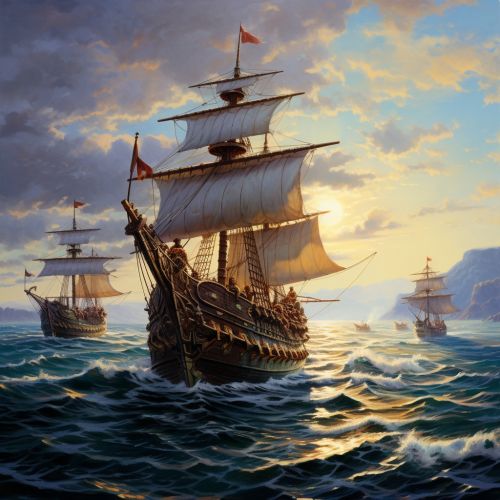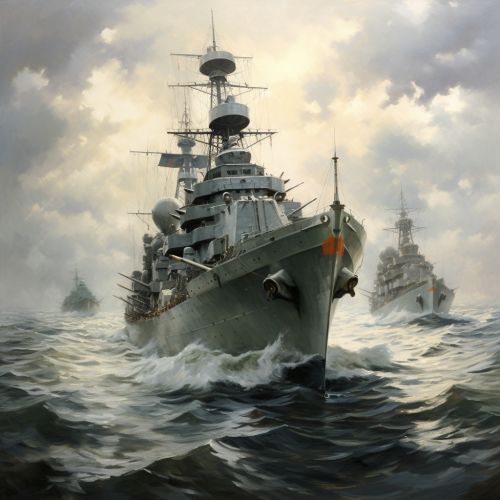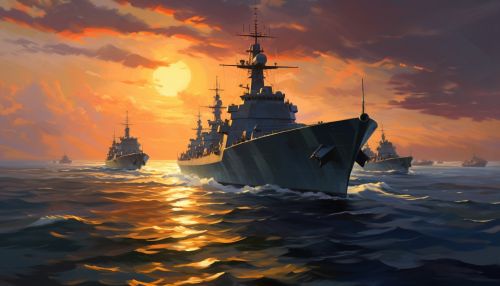History of the Russian Navy
Early History
The origins of the Russian Navy can be traced back to the period of Kievan Rus, a federation of East Slavic tribes in Europe from the late 9th to the mid-13th century. The early Russian state, with its capital in Kiev, had a fleet of ships operating in the rivers and the Black Sea. These vessels, primarily used for trade and warfare, were the precursors to the modern Russian Navy.


The true birth of the Russian Navy, however, is often attributed to Peter the Great, the Tsar of Russia from 1682 until his death in 1725. Peter the Great is widely recognized for his efforts in modernizing Russia, part of which involved building a powerful navy. During his reign, he constructed a fleet of more than 30 ships, marking the beginning of Russia's maritime power.
The Russo-Turkish Wars
The Russian Navy saw significant action during the Russo-Turkish Wars, a series of twelve wars fought between the Russian Empire and the Ottoman Empire from the 17th to the 20th centuries. These conflicts were instrumental in the expansion of Russian territory and influence in the Black Sea region.
The Crimean War
The Crimean War (1853-1856) was a pivotal moment in the history of the Russian Navy. The war, fought primarily in the Crimean Peninsula, saw the Russian Navy pitted against an alliance of the Ottoman Empire, France, Britain, and Sardinia. The war exposed the weaknesses of the Russian Navy, particularly in comparison to the technologically superior British and French fleets. The defeat led to significant naval reforms in the following decades.
The Russo-Japanese War
The Russo-Japanese War (1904-1905) was another significant conflict in the history of the Russian Navy. The war, fought over rival imperial ambitions in Manchuria and Korea, saw the Russian Navy suffer a series of disastrous defeats at the hands of the Japanese Navy. The war highlighted the need for further modernization of the Russian Navy.
World War I and the Russian Revolution
During World War I, the Russian Navy played a significant role in the Baltic Sea and Black Sea theatres. However, the navy was plagued by internal issues, including poor morale and a lack of modern equipment. The navy's problems were further exacerbated by the Russian Revolution in 1917, which led to significant political and social upheaval.


The Soviet Era
The establishment of the Soviet Union in 1922 led to significant changes in the Russian Navy. The navy was reorganized and modernized, with a particular focus on the development of submarines and other underwater warfare capabilities. The Soviet Navy played a significant role in World War II, particularly in the defense of the Soviet Union against the German invasion.
The Cold War
The Cold War era saw the Russian Navy, now part of the Soviet Union, become one of the two most powerful naval forces in the world, alongside the United States Navy. The navy was heavily involved in the arms race, with a particular focus on submarine warfare and the development of nuclear weapons.
Post-Soviet Era
Following the dissolution of the Soviet Union in 1991, the Russian Navy underwent significant changes. Despite facing budget constraints and other challenges, the navy has continued to play a key role in Russian military strategy, with a particular focus on maintaining a strong submarine fleet and developing new naval technologies.
Today, the Russian Navy remains a significant maritime force, with a diverse fleet of surface ships, submarines, and naval aircraft. The navy continues to play a key role in Russian military strategy and has been involved in numerous operations and exercises in recent years.


